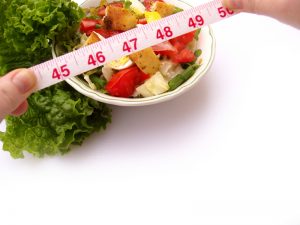New regulations announced last week by the FDA mean you’ll now be able to see how many calories foods and drinks contain at your favorite chain restaurant. That’s potentially good news for cancer prevention because it can help help diners better mana ge their weight. But it also means you will need to know how many calories you’re aiming for in that restaurant meal.
ge their weight. But it also means you will need to know how many calories you’re aiming for in that restaurant meal.
Everyone’s calorie needs differ. And many people — six of seven according to one national survey — can’t estimate the number of calories needed to maintain their weight.
-To help consumers understand the posted calorie information, the FDA says menus and menu boards will include the statement: “2,000 calories a day is used for general nutrition advice, but calorie needs vary.” Here, you can use the USDA site to give you calorie estimates based on your height, activity level and other characteristics. It will differ depending upon if you want to lose weight or stay the same.
-If you’re over age 50, you can also get rough estimates of calorie counts on this NIH site.
-You can also estimate, says AICR’s Associate Director of Nutrition Programs Alice Bender, MS, RDN. For men, take your weight and multiply by 10; for women, multiply your weight by 9. That’s a very rough estimate of calorie needs for baseline so you need to add more for activity. To maintain weight, if you get little or no exercise, add about 20% more calories; for moderate activity (3-5 times/week brisk walking), add 50% more.
When looking at the menu, in general, women can aim for 400 calories for breakfast and lunch, probably more like 500 for dinner/main meal depending on the amount of between-meal snacks. Men typically can aim for 500 calories for breakfast and lunch; 600-700 for main meal, also depending on snacks.
– At AICR, one rule of thumb is to focus on portion and proportion. The New American Plate for cancer prevention is all about making two-thirds of every meal veggies, fruit, beans or other plant foods. The remaining section is milk, meat or other animal foods.
If you don’t know exactly how those restaurant calories fit into your day, you can always cut back on the calories while also upping the cancer-protective plant food portion. Take a look at How Calorie Dense Are My Favorite Foods for some general guidelines.






I want to subscribe to your blog?